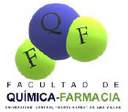
7th International Symposium of Pharmaceutical Sciences
VII SICF
Abstract
Pore-forming toxins (PFTs) puncture the cell membrane and cause one of the most catastrophic damage to a target cell. Despite this drastic effect, cells have evolved to respond against the damage inflicted by the PFT. This capacity for cellular response depends on the toxin and its concentration, on the properties of the pores and the metabolic status and cell type. Sticholysins I and II (StI / II, Sts) and nigrelysin (Ngr) produced respectively by the sea anemones Stichodactyla helianthus (Caribbean Sea) and Anthopleura nigrescens (Costa Rican Pacific) belong to the actinoporin family. All are highly cytolytic proteins, whose activity lies in the nM concentration range, their Mr ~ 20 kDa, show high pI (> 9.5) and preference sphingomyelin-containing membranes. One of the peculiarities of these toxins is that they are produced in soluble form but readily bind both cell and model membranes where they undergo significant conformational changes leading to the formation of a pore of ~1 nm in hydrodynamic radius. Both membrane binding and permeabilizing capacity depend on the lipid composition of the membrane and its physicochemical properties. Here we show the strategy and the most relevant results in terms of membrane binding, permeabilizing capacity, physical properties of the membrane modulating the activity of these actinoporins through biochemical, biophysical procedures and the study of the activation of intracellular pathways that has allowed to carry out studies envisaging their therapeutical applications in cancer o biotechnological applications.
Resumen
Pore-forming toxins (PFTs) puncture the cell membrane and cause one of the most catastrophic damage to a target cell. Despite this drastic effect, cells have evolved to respond against the damage inflicted by the PFT. This capacity for cellular response depends on the toxin and its concentration, on the properties of the pores and the metabolic status and cell type. Sticholysins I and II (StI / II, Sts) and nigrelysin (Ngr) produced respectively by the sea anemones Stichodactyla helianthus (Caribbean Sea) and Anthopleura nigrescens (Costa Rican Pacific) belong to the actinoporin family. All are highly cytolytic proteins, whose activity lies in the nM concentration range, their Mr ~ 20 kDa, show high pI (> 9.5) and preference sphingomyelin-containing membranes. One of the peculiarities of these toxins is that they are produced in soluble form but readily bind both cell and model membranes where they undergo significant conformational changes leading to the formation of a pore of ~1 nm in hydrodynamic radius. Both membrane binding and permeabilizing capacity depend on the lipid composition of the membrane and its physicochemical properties. Here we show the strategy and the most relevant results in terms of membrane binding, permeabilizing capacity, physical properties of the membrane modulating the activity of these actinoporins through biochemical, biophysical procedures and the study of the activation of intracellular pathways that has allowed to carry out studies envisaging their therapeutical applications in cancer o biotechnological applications.
About The Speaker

Carlos Álvarez






